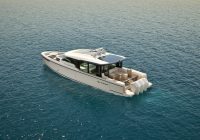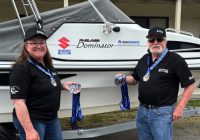It’d be fair to say that soft plastic lures have played a disproportionately significant role in my fishing life, especially across the past quarter of a century. However, my experiences with soft plastics go back a lot further than the turn of the millennium. I can’t remember the very first time I saw, touched, or used a soft plastic, but it would definitely have been a Mister Twister, and it was certainly during the early to mid-1970s.
By the last few years of that decade, I was regularly using double-tailed Mister Twisters to catch flathead in places like the Shoalhaven River, St Georges Basin and Currumbene Creek, near Huskisson, at the back of Jervis Bay. Funnily enough, I don’t remember ever catching anything other than flatties on them (apart from the odd Twister-destroying tailor), and I never really expected to. For me, they were a flathead lure. End of story.
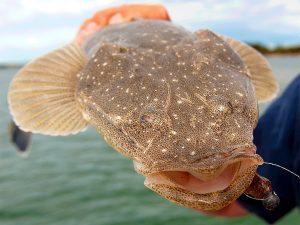
As a young bloke, Starlo figured soft plastics were really only for catching flathead!
By the mid-1980s I still hadn’t expanded my soft plastic horizons much beyond flathead. But then along swum the Scroungers. As well as their revolutionary jig heads featuring a soft, silicone, upward-facing bib for added action, these American-made softies came in a few smaller sizes than the Mister Twisters and Vibrotails I’d used up until that time. Suddenly, I started catching the odd “incidental” species like flounder, trevally, small snapper and — would you believe it — bream!
Fast forward to the late ’90s and I’d taken a deep dive into the whole bream-on-lures “thing”: mostly targeting these fish on small, hard-bodied minnows such as the Aussie-made Attacks, as well as evergreen Yanky micro plugs like Rebel’s Crawdads and Crickhoppers.
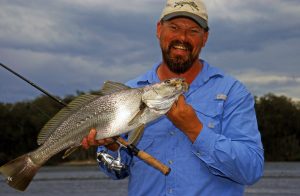
The early days: mail ordering tails from overseas and painstakingly hand-crafting finesse jig heads. The lessons came fast!
I’ve written and spoken many times about what happened next, so I’ll keep it blessedly brief this time for those who’ve heard it all before and are already stifling a yawn!
My mate Bushy and I stumbled across those “Buckets of Bait” that were around at the time. These were jam-packed full of mostly fairly useless (we thought) and rather eccentric American bass plastics shaped like newts, toads and salamanders. But in the bottom of most buckets would be a couple of small pink or red curly-tailed grubs — much smaller than anything we’d been able to get hold of before. Turned out these things were bream candy, and our catch rate sky rocketed using them. Like kids ratting through the breakfast cereal box in search of the bonus plastic spaceman (I’m showing my age now!), we bought tub after tub of these things to mine them for those rare nuggets.
What followed were months and ultimately years of scouring overseas tackle catalogues for more of the same (and better), as well as painstakingly building and hand-painting our own lightweight finesse jig heads using fine gauge Aberdeen hooks, split shot and nail polish. To say we learnt a bit in the process might be an understatement.
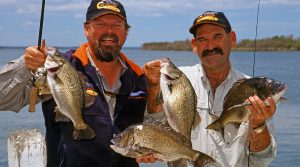
Starlo and Bushy channelled their finesse luring energies into creating the Squidgies for Shimano Australia.
Fortuitously, it was at this point that the then-boss of Shimano Australia, John Dunphy, saved us both from bankruptcy and a slow death from inhaling nail polish fumes by offering us access to the biggest soft plastic lure factory in China and giving us a blank sheet to design a range of soft plastics for his company. That step changed our lives, and ultimately changed Australian recreational fishing… forever.
The rest, as they say, is history. The subsequent “Squidgies Story” is a fascinating and often misunderstood one. If you’d like to learn a little more about it, I made a full episode of my Tuesday Chats video and podcast series on exactly that subject earlier this year.
Or listen to it as a podcast here: starlosfishotopia.buzzsprout.com
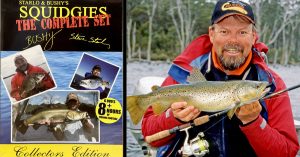
The early years of Squidgies were a revelation and changed forever the way so many Aussies go fishing… Remember the videos and DVDs?
From the launch of the Squidgies range for Shimano in the very early 2000s down to the present day, I’ve done a heck of a lot of fishing with soft plastics (mostly Squidgies, of course!) and I’ve literally lost count of how many species of fish I’ve caught on them: from tiny trout in mountain streams to serious tuna out on the blue water, plus just about everything else in between.
I don’t think there’s anything especially magical about softies, and there are places and times when hard lures or natural baits will out-fish them. But day in and day out, when the chips are down and the fishing is tough, I’ll typically reach for a jig head, a Squidgy, and a tube of S Factor scent to unlock some tightly clenched fish jaws. It works for me. It’s my “go-to” strategy.
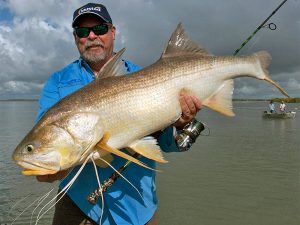
Starlo has lost count of the species he’s caught on soft plastics. This big Hervey Bay threadfin ate a Squidgy Prawn.
However, one thing I learnt very early on, when I was still mail-ordering tails from across the globe and painstakingly making my own jig heads by hand, is that there are subtle nuances in the soft plastic game that can and very often do spell the difference between occasional, haphazard catches and consistent success. Mostly these boil down to picking the best combination of plastic and jig head for the conditions at hand, rigging those components together exactly the right way, and then — most importantly of all — presenting and manipulating that rigged lure correctly in the water to fool a fish into eating it. It’s one of those games where a 10% tweak here or there can have a 90% impact on the outcome. Little things matter.
I’ve spent a hefty chunk of my time as a fishing communicator and educator attempting to teach those subtleties to as many of my fellow fishos as I possibly can: initially through magazines, books, live presentations, videos and DVDs and, more recently, online. I guess you could refer to it as a “calling” of sorts, and I gain immense pleasure from seeing or hearing about those light bulb moments when previously sceptical fishers become true converts to soft plastics. Watching their fishing game shift up a gear as a result is what floats my boat.
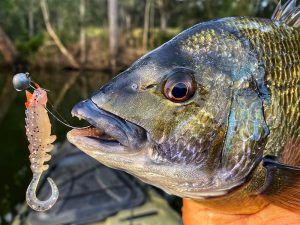
Rigging strategies and nuances can make a massive difference to your results.
Now, I’ve distilled all of that teaching into a detailed on-line course consisting of 10 in-depth modules featuring video, text, images and illustrations — all designed to break the entire process down into easily digestible, bite-sized chunks that I guarantee can turn anyone into a consistently successful soft plastic fisher… and I’m delighted to say it’s already working. I did a “soft launch” of the course to a small team of “Beta Testers” earlier this year, and they’ve helped me refine the finished package. This past week, it has finally gone public, launched via a YouTube episode you can watch here, featuring one of the major and most important video components from the full course.
In closing, I can do no better than to quote some of the testimonials I’ve received from students who’ve already completed this course. Here are just a few:
“You have a real knack for presenting educational content in a calm, balanced and factual way that resonates with those learning from your words of wisdom. It should help a lot of folks!” — Subieroo Aus
“I’ve gone from scepticism to belief… and from numpty to novice. I can’t wait for my next outing this weekend!” — Mark Schenk
“I am really enjoying the content and finding it very informative.” — Adam Walsh
“I have caught more fish on plastics since watching!” — Tony Sharman
“Relevant, informative and engaging!” — Laurie Broomhead
“The rigging section has really helped me.” — Paul Dawe
Sign up for Soft Plastics Mastery
Until next time, Tight Lines.
![]()

Steve (Starlo) Starling is an Australian sports fishing writer and television personality who has appeared in many of Rex Hunt’s Fishing Adventure programs on the Seven Network.
He has published twenty books on the subject of angling, as well as thousands of magazine articles.
Starlo has scripted and presented many instructional videos and DVDs, and been a Researcher and on-screen presenter for a number of Australian angling and outdoor television programs.
Follow Starlo Gets Reel on Youtube for some of the best, educational and most entertaining fishing viewing on-line.
Click on the banner below for a direct link to the Channel.






